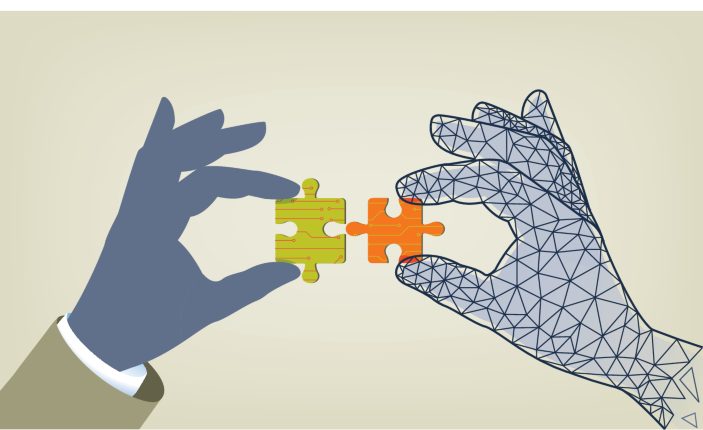
The way Indians consume content is evolving rapidly. With the rise of AI-first platforms like Google Gemini, ChatGPT, Meta’s Llama-powered ads, and voice-based assistants, the future of digital marketing is becoming multilingual, conversational, and hyper-personalized.
India is home to 22 official languages and 19,500 dialects, yet only a fraction of online content caters to them. That’s a massive opportunity.
So, if your brand or digital marketing team wants to stay ahead of the curve, it’s time to learn how to generate and optimise content for AI-first platforms in Indian languages — from Hindi and Bengali to Tamil, Telugu, and Marathi.
Let’s explore how.
1. What Are AI-First Platforms?
AI-first platforms are systems that use artificial intelligence to create, rank, or recommend content based on user intent rather than just keywords.
Examples include:
- Google Gemini / Search Generative Experience (SGE) — creates AI summaries of search results.
- YouTube AI tools — optimize titles, tags, and translations.
- Meta AI — personalizes ad creatives for local audiences.
- ChatGPT & Bard integrations — generate content insights and local recommendations.
These platforms analyze not just what you post but how people engage with it.
To perform well on them, your content must be:
✅ Informative
✅ Contextually relevant
✅ Linguistically natural
✅ Culturally resonant
2. Why Indian Languages Are the Future of Digital Marketing
According to a KPMG–Google report, 9 out of 10 new internet users in India prefer consuming content in their regional language.
That means if your business isn’t speaking in your customer’s preferred tongue, AI won’t prioritize your content in regional searches or recommendations.
In short — language is no longer just communication; it’s a ranking factor.
At Picasso Multimedia, we help businesses design multilingual content strategies where AI tools + human translation work together to produce culturally relevant and SEO-friendly content for each region.
3. Step-by-Step: How to Generate AI-Ready Indian Language Content
a) Start with Data-Driven Insights
Before translating, understand what users in each region are searching for.
Use tools like:
- Google Trends (India filters)
- SEMrush keyword gap analysis by region
- AnswerThePublic for Hindi, Bengali, Tamil, etc.
These help identify local interests, seasonal search spikes, and cultural relevance.
b) Use AI Tools to Generate Multilingual Drafts
AI tools like ChatGPT (GPT-5), Bhashini, and Google’s Translation Hub can generate first drafts in multiple Indian languages.
But don’t publish them as-is. AI often struggles with regional idioms or tone. Always have native speakers refine the text for cultural nuance.
For example:
A Tamil customer might respond better to emotional storytelling, while a Gujarati audience may prefer direct, value-driven communication.
c) Localise Visuals and Voice
AI-first algorithms also analyze visual and audio signals.
- Use captions and voiceovers in the target language.
- Generate AI voice clones for Indian accents using tools like ElevenLabs or Resemble.ai.
- Ensure your video metadata (titles, descriptions, tags) matches the language.
This increases engagement and improves visibility across AI-curated feeds like YouTube and Meta Reels.
4. Optimising for AI-First Search & Discovery
Unlike traditional SEO, AI-first ranking considers contextual value, semantic understanding, and user satisfaction.
To optimise Indian language content:
- Use natural phrasing — Write how people actually speak.
- Include bilingual elements — Blend English keywords with local language context (Hinglish, Tanglish, etc.).
- Optimize metadata in the same language — Title, alt text, captions, hashtags.
- Structure your content cleanly — AI reads context better when headlines, lists, and paragraphs are well-organized.
- Answer intent, not keywords — Instead of stuffing, solve problems users ask in their native phrasing.
At Picasso Multimedia, we train AI models on region-specific user data to identify the exact linguistic cues that trigger engagement in local audiences — whether it’s emotional storytelling or vernacular call-to-actions.
5. The Role of Voice Search in Regional AI Content
Voice is the most natural form of AI interaction — and in India, over 50% of searches happen through voice.
Optimising for voice means:
- Writing in conversational tone.
- Using question-based content (“कौन सा फोन सबसे अच्छा है 2025 में?”).
- Embedding FAQ sections in regional languages.
Tools like Google Speech API and Amazon Polly help brands fine-tune regional voice experiences for e-commerce, education, and service industries.
6. Challenges You’ll Face (and How to Overcome Them)
| Challenge | Solution |
|---|---|
| Inaccurate translations | Hire local proofreaders or freelancers on platforms like Fiverr or Upwork to refine AI drafts. |
| Limited SEO tools for Indian languages | Use multilingual keyword generators (e.g., SEMrush + Google Trends). |
| Cultural tone mismatch | Work with regional creators or agencies who understand context. |
| Lack of AI model training data | Fine-tune generative AI tools with your brand’s historical content in each language. |
At Picasso Multimedia, we combine human linguistic experts with AI-driven localisation workflows to ensure every campaign speaks the customer’s language — both literally and emotionally.
7. The Future: Multilingual AI Agents for India
Soon, businesses will deploy AI agents that chat, recommend, and sell in native languages — from WhatsApp bots to voice assistants on e-commerce sites.
That’s why content localisation isn’t just a marketing trend — it’s infrastructure.
Brands that invest now will dominate AI-driven recommendation systems later.
Conclusion: Speak the Language, Win the Market
AI-first platforms are redefining what visibility means — and in India, language is your biggest growth lever.
If your content doesn’t reflect the diversity of your audience, algorithms won’t either.
By blending AI automation with human authenticity, you can connect with India’s next billion users faster and smarter.
At Picasso Multimedia, we specialize in helping businesses design AI-powered, multilingual content ecosystems that resonate across every Indian language.
Because in the AI era, those who speak every language — win every market.

